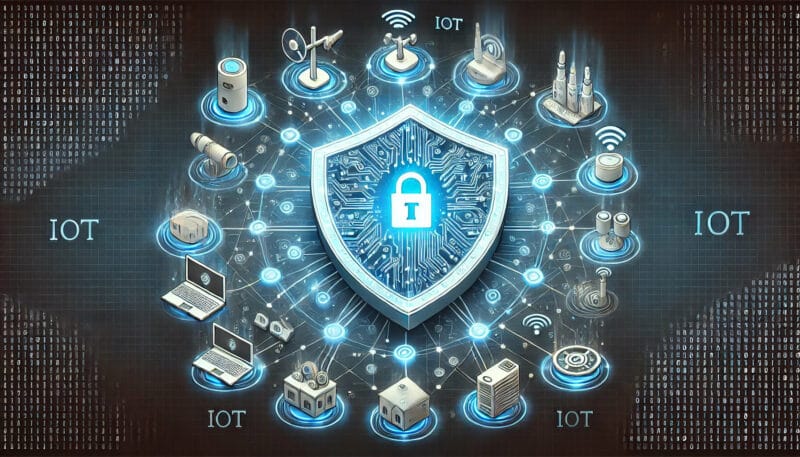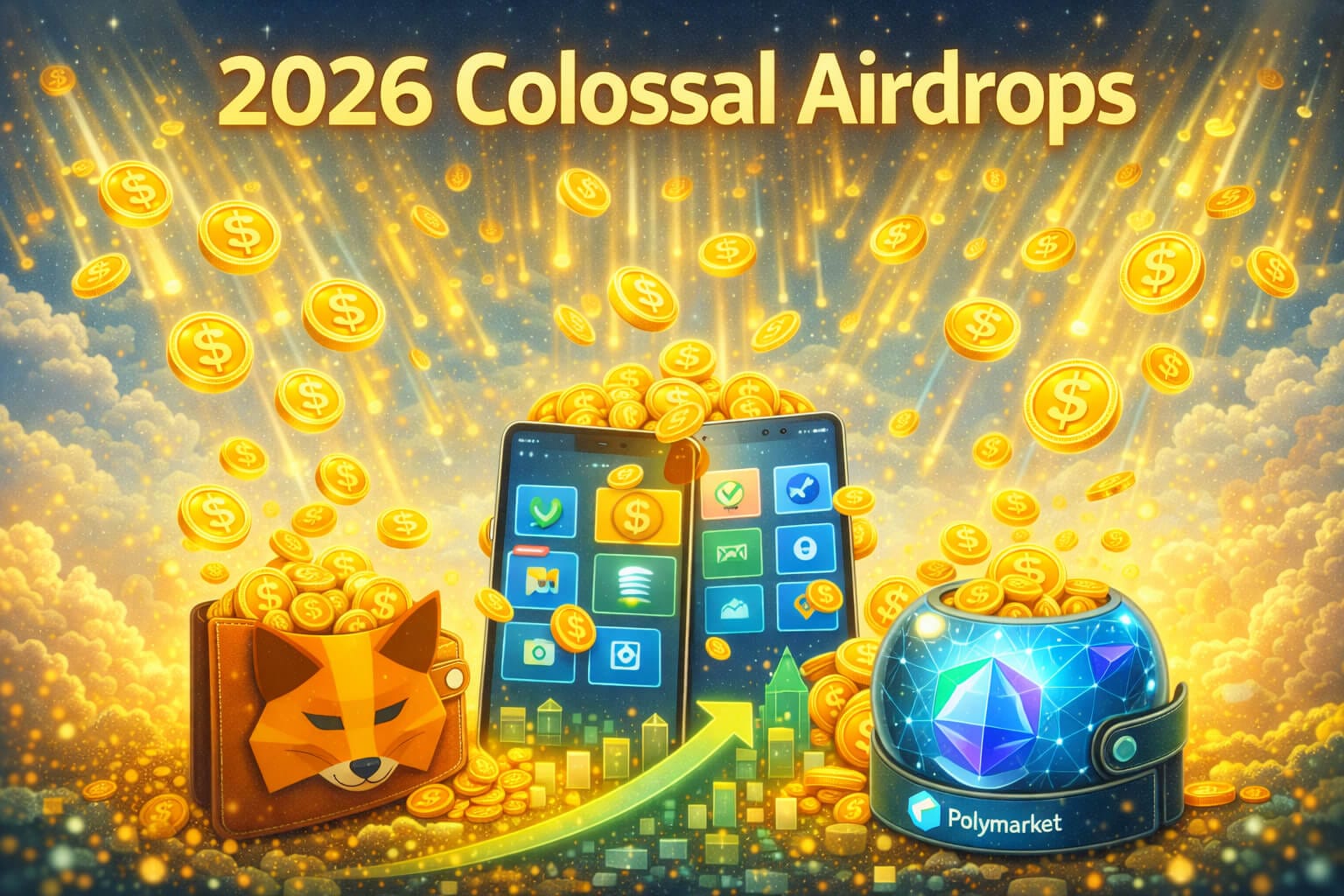1. Introduction: The Intersection of Blockchain and IoT
The Internet of Things (IoT) represents one of the most significant technological advancements of the 21st century, connecting billions of devices worldwide. These connected devices, ranging from smart home appliances to industrial sensors, generate vast amounts of data and play a crucial role in various industries, including healthcare, manufacturing, and transportation. However, the rapid expansion of IoT has introduced several challenges, particularly in areas like security, scalability, and data integrity. Blockchain technology, with its decentralized, secure, and transparent nature, offers a promising solution to these challenges. By integrating blockchain with IoT, we can create a more secure, scalable, and efficient ecosystem of connected devices.
Why Blockchain Matters for IoT:
Blockchain enhances IoT by addressing critical challenges like security vulnerabilities, data integrity, and the need for scalable solutions, making it a crucial technology for the future of connected devices.
2. How Blockchain Enhances IoT
2.1 Security: Protecting IoT Networks from Cyber Threats
One of the most significant challenges facing IoT networks is security. IoT devices are often vulnerable to cyberattacks due to their limited computing resources and lack of robust security measures. Traditional centralized security models are inadequate for IoT networks, as they create single points of failure that can be exploited by attackers. Blockchain technology offers a decentralized security solution, where data is distributed across a network of nodes, making it much harder for attackers to compromise the system. Each transaction or data exchange in a blockchain-based IoT network is securely recorded on the blockchain, ensuring data integrity and preventing unauthorized access.
- Key Benefits:
- Decentralized Security: Blockchain’s decentralized nature eliminates single points of failure, enhancing IoT security.
- Data Integrity: Each transaction is cryptographically secured, ensuring that IoT data remains tamper-proof.
- Prevention of Unauthorized Access: Blockchain ensures that only authorized devices and users can access the IoT network.
2.2 Scalability: Enabling Growth of IoT Networks
As IoT networks continue to grow, the need for scalable solutions becomes increasingly important. Traditional centralized systems struggle to handle the massive amount of data generated by billions of connected devices. Blockchain technology offers a scalable solution by distributing data processing across multiple nodes in the network. This decentralized approach allows IoT networks to handle a higher volume of transactions without compromising performance. Additionally, blockchain’s ability to process transactions in parallel (through techniques like sharding) further enhances the scalability of IoT networks.
- Key Benefits:
- Distributed Data Processing: Blockchain distributes data processing across the network, enabling scalability.
- High-Volume Transaction Handling: IoT networks can handle more transactions without performance degradation.
- Parallel Processing: Techniques like sharding allow for the parallel processing of transactions, improving scalability.
2.3 Interoperability: Facilitating Communication Between Devices
The IoT ecosystem comprises a wide range of devices from different manufacturers, often operating on various protocols and standards. This lack of standardization creates interoperability challenges, where devices struggle to communicate effectively with each other. Blockchain can address this issue by providing a standardized platform for data exchange and communication between IoT devices. Smart contracts, self-executing contracts with the terms of the agreement directly written into code, can automate and enforce interactions between devices, ensuring seamless interoperability across the IoT network.
- Key Benefits:
- Standardized Data Exchange: Blockchain provides a common platform for IoT devices to communicate, improving interoperability.
- Smart Contracts: Automated contracts ensure seamless and secure interactions between devices.
- Cross-Platform Communication: Blockchain enables devices from different manufacturers to communicate effectively.
2.4 Data Integrity and Transparency: Ensuring Trust in IoT Networks
Data integrity is crucial in IoT networks, particularly in applications that require accurate and reliable data, such as healthcare and supply chain management. Blockchain’s immutable ledger ensures that data recorded on the blockchain cannot be altered or tampered with, providing a high level of trust in the data generated by IoT devices. Additionally, blockchain’s transparency allows all participants in the network to verify the data, ensuring that it is accurate and trustworthy.
- Key Benefits:
- Immutable Ledger: Blockchain’s immutable ledger prevents unauthorized changes to IoT data.
- High Data Trust: The transparency of blockchain ensures that all data can be verified and trusted.
- Enhanced Data Reliability: Blockchain ensures that data used in critical applications remains accurate and reliable.
3. Use Cases of Blockchain in IoT
3.1 Supply Chain Management
Blockchain’s ability to provide transparency and traceability makes it an ideal solution for supply chain management in IoT. By integrating blockchain with IoT, companies can track the movement of goods in real-time, ensuring that products are authentic and comply with regulations. Each step of the supply chain, from manufacturing to delivery, can be recorded on the blockchain, providing a verifiable history of the product’s journey. This level of transparency helps prevent fraud, reduces inefficiencies, and enhances trust between supply chain partners.
- Key Use Cases:
- Real-Time Tracking: IoT devices record the movement of goods, while blockchain provides a transparent history.
- Fraud Prevention: Blockchain’s transparency helps detect and prevent fraudulent activities in the supply chain.
- Regulatory Compliance: Companies can verify that products meet regulatory standards throughout the supply chain.
3.2 Smart Cities

The concept of smart cities involves the integration of IoT devices to manage urban infrastructure efficiently, such as traffic lights, waste management systems, and energy grids. Blockchain technology can enhance the security and efficiency of these systems by providing a decentralized platform for managing data and automating processes through smart contracts. For example, blockchain can facilitate secure communication between traffic management systems and connected vehicles, optimizing traffic flow and reducing congestion. Additionally, blockchain can enable secure and transparent management of public services, such as energy distribution and waste collection.
- Key Use Cases:
- Traffic Management: Blockchain facilitates secure communication between connected vehicles and traffic systems.
- Public Service Management: Blockchain enables transparent and efficient management of public services in smart cities.
- Energy Distribution: Blockchain can automate and secure energy distribution in smart grids.
3.3 Healthcare
In the healthcare industry, blockchain can enhance the security and integrity of IoT-generated data, such as patient records, medical device data, and diagnostic results. By recording this data on a blockchain, healthcare providers can ensure that it remains tamper-proof and accessible only to authorized personnel. Additionally, blockchain can facilitate the secure sharing of patient data between different healthcare providers, improving the quality of care and ensuring that patients receive accurate diagnoses and treatments.
- Key Use Cases:
- Secure Patient Records: Blockchain ensures that patient records are secure and tamper-proof.
- Medical Device Data: IoT-generated data from medical devices is securely recorded on the blockchain.
- Data Sharing: Blockchain facilitates the secure sharing of patient data between healthcare providers.
4. Challenges and Considerations with Blockchain in IoT
4.1 Scalability and Performance
While blockchain offers solutions for scaling IoT networks, it also presents challenges related to scalability and performance. As the number of IoT devices and transactions grows, the size of the blockchain increases, requiring more storage and processing power. This can lead to slower transaction times and increased costs. Addressing these scalability challenges will be crucial for the successful integration of blockchain in IoT.
- Key Challenges:
- Blockchain Size: The growing size of the blockchain can lead to performance issues.
- Transaction Speed: Increased transaction volume can slow down the network.
- Resource Requirements: More storage and processing power are needed to maintain the blockchain.
4.2 Integration with Legacy Systems
Many IoT networks rely on legacy systems that may not be compatible with blockchain technology. Integrating blockchain with these existing systems can be complex and costly, requiring significant modifications or even a complete overhaul. Developing seamless integration strategies will be essential for organizations looking to adopt blockchain for IoT.
- Key Challenges:
- Compatibility Issues: Legacy systems may not easily integrate with blockchain technology.
- Cost and Complexity: Integrating blockchain may require significant investment in time and resources.
- System Modifications: Modifying existing systems to support blockchain can be challenging.
4.3 Regulatory and Compliance Concerns
As with any emerging technology, blockchain faces regulatory and compliance challenges, particularly in industries like healthcare and finance, where data privacy and security are paramount. Organizations must navigate complex regulatory landscapes to ensure that their use of blockchain in IoT complies with legal requirements. Additionally, the lack of standardized regulations for blockchain can create uncertainty for companies looking to adopt the technology.
- Key Challenges:
- Regulatory Compliance: Ensuring that blockchain solutions comply with industry-specific regulations.
- Data Privacy: Balancing the need for transparency with data privacy requirements.
- Standardization: The lack of standardized regulations for blockchain creates uncertainty.
5. The Future of Blockchain in IoT
5.1 Increased Adoption and Industry Support
As the benefits of blockchain in IoT become more widely recognized, we can expect to see increased adoption across various industries. From manufacturing and supply chain management to healthcare and smart cities, blockchain will play a critical role in enhancing the security, scalability, and efficiency of IoT networks. As more organizations implement blockchain solutions, the technology will continue to evolve, offering even greater capabilities for managing connected devices.
- Key Trends:
- Industry Adoption: Blockchain is being adopted across various industries to enhance IoT networks.
- Technological Evolution: As blockchain evolves, it will offer even greater capabilities for IoT.
- Widespread Implementation: The role of blockchain in IoT will expand as more organizations adopt the technology.
5.2 Integration with Emerging Technologies
The future of blockchain in IoT will also involve integration with other emerging technologies, such as artificial intelligence (AI), edge computing, and 5G networks. These technologies can enhance the capabilities of blockchain, offering new ways to manage and secure IoT devices. For example, AI can be used to analyze IoT data in real-time, while edge computing enables faster processing by bringing computation closer to the data source. Additionally, 5G networks will provide the speed and bandwidth needed to support large-scale IoT deployments, further enhancing the potential of blockchain in IoT.
- Key Trends:
- AI Integration: AI can enhance blockchain’s ability to analyze and manage IoT data.
- Edge Computing: Edge computing enables faster processing by bringing computation closer to IoT devices.
- 5G Networks: The speed and bandwidth of 5G networks will support large-scale IoT deployments.
Conclusion: Blockchain as a Catalyst for the Future of IoT
Blockchain technology offers significant potential for transforming the Internet of Things by addressing key challenges like security, scalability, and interoperability. As the technology continues to evolve, blockchain will play an increasingly important role in enhancing the efficiency and security of IoT networks, paving the way for a more connected and secure world. Organizations looking to leverage the full potential of IoT should consider integrating blockchain technology into their networks to ensure that their devices and data are secure, scalable, and interoperable.
For more insights and detailed analysis on the future of blockchain and IoT, explore our Blockchain and IoT Guides section.
Stay Updated
For the latest updates on blockchain and IoT, follow us on:
Stay informed with the latest strategies and insights in the world of blockchain at FreeCoins24.io.
Special Offer
Looking to explore blockchain solutions for IoT? Sign up on Bybit today and take advantage of up to $30,000 in deposit bonuses. Start building on secure and scalable IoT networks with blockchain technology.

















